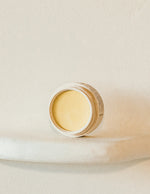
IN THIS ARTICLE
Do you ever see photos of homes filled with plants and instantly have green thumb envy? Bringing the outdoors in is becoming increasingly trendy these days and for a good reason. Scientific studies have proven that having house plants not only helps clean the air in your home, but can have positive effects on your mental health.
Spaces with plants automatically feel more comfortable and inviting.
It may be tempting to grab a faux plant from Target and call it a day (there is absolutely nothing wrong with faux plants), but I am telling you there is nothing like having a living plant thriving in your home.
So here are some of the easiest houseplants that you can add to your space and some care tips for them. They are listed by their common name, followed by their scientific name.
Snake Plant (Sansevieria)

Image source: Trillium Living
Light: Low-bright sunlight (thrives in bright light)
Water: Low (monthly)
Soil: Well draining soil like a cactus and succulent mix
Snake plants (also nicknamed mother-in-law's tongue) are easily recognized by their long and pointy or sword shaped leaves that grow straight up. They are always one of the first plants that I recommend to anyone that feels they do not have a green thumb. These plants are virtually indestructible, you may see them labeled at stores as 'plants of steel'.
They can survive in ANY light source, but they absolutely thrive in brighter light. They do best with a minimal and consistent watering schedule but can go months without any water. This makes them great plants for those that are busy and forget about their plants easily. I water mine a good soak once a month during growing season and every other month in the winter.
PRO
- Minimal care needed
- Can be propagated
- Can live in any light
- Hardy
- Good at removing toxins from indoor air
CON
- Mildly toxic to humans and animals if ingested
- Sensitive to overwatering
- Slow growers in certain conditions (like low light or not enough water).
Pothos (Epipremnum Aureum)

Image source: @parkercollectiveco
Light: Bright indirect light
Water: Medium ( Once every 1-1.5 weeks)
Soil: Well draining (I use a cactus soil mixture for this one as well)
Pothos (also nick named devil's ivy) are another common houseplant that have a reputation of being pretty easy going. While pothos tolerate low light conditions they really do best in bright, indirect sunlight. They prefer to be watered once every 7-10 days or when the top half of their soil has dried out.
Just remember: lower light = less frequent watering for most plants. There are many different kinds of pothos plants (golden pothos being most common), but you can recognize them by their heart shaped leaves and long vines. Most varieties of pothos have variegated leaves.
Fun Fact: Variegation usually only shows when the plant is getting enough light. If your pothos is in a dark corner and has little to no color on its leaves, try giving it more sun to bring out its variegation again.

Image source: Pinterest
PRO
- Grows in many light conditions
- Fast growing (in favorable conditions)
- Good at removing indoor toxins from air
- Easy to propagate
CON
- Mildly toxic to humans and animals if ingested
- Sensitive to overwatering
ZZ Plant (Zamioculcas)

Image source: The Sill
Light: Medium to bright indirect sunlight
Water: Low (Every 2-3 weeks)
Soil: Well draining (cactus mix works for this plant as well or you can mix your own chunky soil).
A ZZ plant is another plant that you may see labeled as a 'steel' plant. These guys are TOUGH. They need very little water thanks to their rhizomes that store water. They can survive in very low lighting just like snake plants, though they prefer a lot of indirect light. Their long stems can grow 3-4 feet tall and are filled with small oval leaves. ZZ plants can be easily propagated from a leaf cutting, but are very slow growers when grown as indoor houseplants.
ZZ plants have a bad rep for being extremely poisonous. While they are toxic- it's not as bad a most people think. There was a rumor that they could cause cancer, which is not true. While every part of the plant (from it's leaves to its roots) is considered poisonous, the plant is covered in a waxy protective coating. This coating not only protects the plant but keeps the calcium oxalate crystals (that cause allergic reactions) in.
Regular watering and touching should not be an issue. You should wear gloves when propagating or repotting though and always wash your hands after to make sure that you do not come in contact with the "juices" of the plant.
PRO
- Minimal Care required
- Tolerates low light and drought
- Easy to propagate
CON
- Sensitive to overwatering
- Slow growing, even in ideal conditions
- Sapp is poisonous if ingested/ mildly irritating to skin and eyes if you come in contact with it
Peace Lily (Spathiphyllum)

Image source: Plant Savvy
Light: Medium indirect Light
Water: Moderate (weekly)
Soil: Well draining (they are not picky as long as they don't have wet feet)
Peace Lily's are great starter plants and are common as gifts. They have beautiful green arching leaves and will even bloom with white flowers when given enough sunlight. What I love most about peace lily's is that they are great at communicating when they need water. Some might say they are a bit dramatic about it.
When they are in need of a drink you will notice that their leaves begin to droop and wilt (similar to most other plants), but they go from slightly droopy to looking 100% dead very quickly. It's impossible not to notice once the perky leaves are completely limp. Once you make the soil moist again with a thorough drink of water it will perk back up within hours. I would not recommend waiting until this point to water every time. It is a helpful reminder if you forget about your peace lily though.
PRO
- Low maintenance
- Easy to tell when it needs watered
CON
- Sensitive to overwatering
- Does not like tap water (will show signs of mineral build up easily)
- Toxic to cats and dogs
Umbrella Plant (Schefflera Arboricola)

Image source: The Spruce
Light: Medium to bright indirect sunlight
Water: Moderate
Soil: Moist soil
You may have already guessed this, but the umbrella plant gets is name from the unique way that its leaves grow. They do not seem to be as popular as some of the other plants on this list but they make wonderful starter plants. The thrive in lots of indirect light and need watered once their pot dries out.
They also love higher humidity. Schefflera's are easily susceptible to root rot but given the proper conditions they can grow up tp 6ft tall and 4ft wide indoors. This plant is commonly confused with Umbrella Tree Schefflera Actinophylla.
PRO
- Unique looking plant
- Low maintenance
- Grows quickly
- Easy to propagate
CON
- Toxic to humans and pests if ingested
- prone to pests
String of Pearls (Senecio Rowleyanus)

Image source: @608interiors_
Light: Bright direct light
Water: Low-moderate
Soil: Cactus soil mix
Sting of pearls are very unique plants that can be beautiful if properly cared for. They have a reputation of being super difficult plants, but I can tell you they are very easy going when you give them what they need. It is just a mater of finding the right balance.
I get questions about how I care for mine all the time, so here are my best tips for this adorable bubbly plant.
- Put it directly in a window where it will get hit with the sun's rays (mine is in an east window). Make sure that the top of pot gets the sun.
- Use a terracotta pot that is not too big (this will help prevent over watering).
- Instead of soaking this plant and waiting weeks before watering again like you would with other cacti and succulents, try watering once every 7-8 days just enough to moisten the soil. It should be completely dried out before you water again the next week. They do not like to stay moist for long, but the plant itself will dry up quickly due to the size of their leaves (the pearls) and cannot withstand long periods of drought.
This will easily be one of your favorite house plants once you figure it out.
PRO
- Fast growing
- Easy to propagate
CON
- Can be difficult to figure out
- absolutely has to have bright, direct sunlight
- Toxic to dogs and humans if ingested
Heart Leaf Philodendron (Philodendron Hederaceum)

Image source: @608interiors_
Light: Bright indirect light
Water: Moderate (every 7-10 days)
Soil: Moist soil
This extremely common house plant is high on my favorites list. I have four of them in our home. It's velvety, heart shaped leaves drape beautifully when you let the vines trail. They are a very rewarding plant when properly cared for. Heart leaf philodendrons are tropical plants that are usually found growing on the ground under the jungle's shaded canopies. They will thrive in medium direct light with higher humidity (though they can tolerate low humidity as well). I water mine every 7 days during growing season and every 12-14 days in the winter months. Just make sure the top couple inches of the soil feels dry.
PRO
- Fast growing
- Easy to care for
- Can tolerate lower light conditions
- Easy to propagate
CON
- Toxic to humans and dogs if ingested
Mini Monstera (Rhaphidophora Tetrasperma)

Image source: Pinterest
Light: Bright indirect ligtht
Water: Moderate-high
Soil: Damp but well draining
As far as popular houseplants go, the raphi tetra is having a moment. Which is no surprise given this plants reputation for being a hearty, fast grower. Nicknamed mini monstera or philodendron Ginny, the raphi tetra is actually neither of these plants. It is however in the same Araceae family and considered a cousin to philodendrons and monsteras.
They are tropical and native to Thailand so they enjoy higher humidity but will tolerate lower household humidity. Raphidophora's prefer that their soil stays damp, but do not like to stay in excess water. I water mine once every 4-5 days. They also love to climb.
PRO
- Fast growing
- Easy to propagate
CON
- Toxic to pets if consumed
- Prone to pests
Monstera (Monstera Deliciosa)

Image source: Tumblr
Light: Bright- medium indirect light
Water: Moderate
Soil: Regular potting soil with a bit of peat moss mixed in or cactus mix if you are afraid of overwatering.
While there are many other popular varieties, most people are referring to the Deliciosa when they talk about a monstera. It is easily recognized by it's beautiful, tropical and jungle looking leaves which have fenestrations in them . Monsteras tend to look intimidating, but you'd be surprised how easy they are to care for. They enjoy a good amount of indirect light and humidity. You can increase the humidity around this plant by setting a pebble tray of water near by, running a humidifier in the space or misting it weekly.
These plants can get very large and grow a bit wild. If you have a smaller home you may want to make sure you get it growing up a pole and/or keep it trimmed back so that it does not take over. They also have very large and wild air roots that grow off the plant as well. Monsteras are sensitive to over watering and should be watered once every 1-2 weeks when the top half of its soil is dry.
PRO
- Beautiful large leaves
- low maintenance
- easy to propagate
CON
- Can grow very large and out of control once matured
- Needs supported with a totem or moss pole
- Toxic to humans and animals if ingested.
Other Common House Plants
All of the plants listed above are popular house plants that are easy going and fairly simple to care for once your know their needs. Below is a list of some other common house plants, some of which may be a bit more finicky.
- Rubber Plant (Ficus Elastica)
- Fiddle Leaf Fig (Ficus Lyrata)
- Jade Plant (Crassula vata)
- Spider Plant
- Asparagus Fern
- Prayer Plant
- Weeping Fig (Ficus Tree)
- English Ivy
- Wandering Jew Plant (Tradescantia zebrina) * Now being referred to as Wandering Dude or one of its many other common names.
- Elephant Ear Plant
- Fern Cactus
Key Plant Terms
- Variegation: The appearance of different colored zones on leaves, stems, fruit or flowers.
- Wet feet: A term used for excessive water around the plants roots.
- Root rot: The decaying of a plants root system most commonly caused by overwatering
- Propagation: (in terms plants) is the process of growing new plants from cuttings or leaves taken from more mature plants.
- Direct light: When the suns rays directly hit the plant through the window. Examples: South windows all day, morning sun: east windows, evening sun: west windows.
- Indirect light: Light where the sun's rays do not directly hit the plant. The light can be filtered through a sheer curtain or the plant is set further from a window. Examples: North facing windows all day (not usually bright), east windows in the afternoon and west windows in the morning. Here is an article that helps clarify lighting and where to place your plants based on their needs.
Hopefully you feel inspired to experiment with some greenery in your home! My biggest piece of advice is to research, research, research before bringing a house plant home. Make sure you know what kind of light your space has to offer and pick a plant that will thrive in it.
























 TOP
TOP



